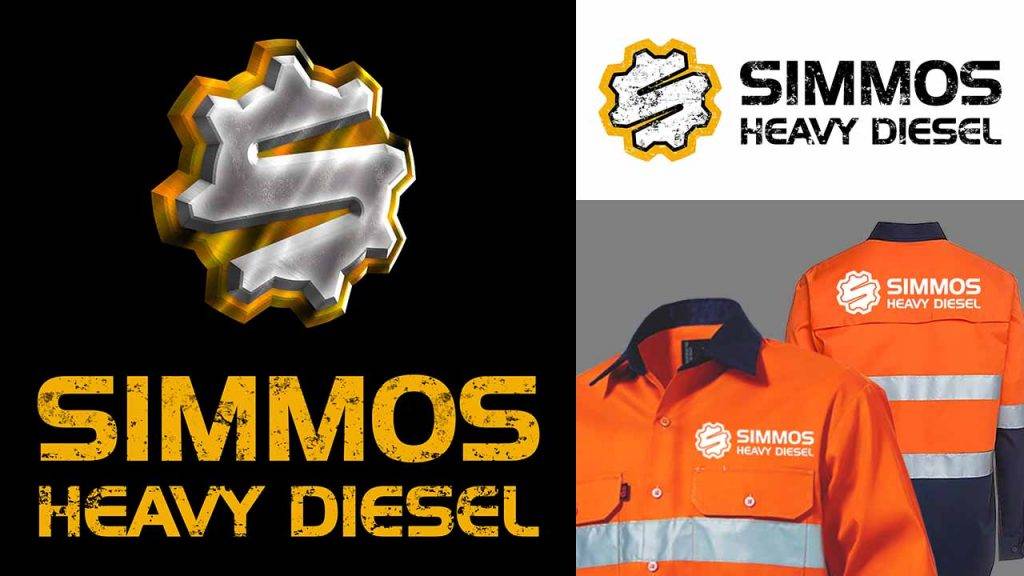Featured image source: Myriams-Fotos
Y
ou woke up this morning – hopefully fresh as a daisy and not with a pounding headache due to last night’s enjoyment – and you still had this idea. This idea that has now be living rent-free in your brain for some times.
You thought new years eve would put it to rest (or at least your end-of-the-year-bonus would), but no. It’s alive and pumping…
What if you started your own business?
You have the skills, the passion, an idea and a rough plan. You sure know you could do better than any of your potential competitors. Or at least you could make it viable enough to live from.
Good on you!
Check out this great step by step guide the government put together to starting your own business.
And if you’re anything like us, we bet you want to do it right the first time. That’s why you need a brand. An identity that will inspire trust, that will be relatable and compelling for your potential customers.
So you want to be a boss? Let’s talk about your brand identity.
Your brand identity is what will make you connect with your audience on a deeper level. That’s what will compel them to buy and make them think “this guy understands my struggle and what he’s selling is the solution”.
Keep in mind people want something real, and usually genuine.
It’s important to create your identity as the first step of your creative journey. You’ll have to choose the right visuals to represent your brand and maintain a consistent style and tone over all your mediums. If you do this, you’ll be more likely to attract trusting customers who are happy to buy from you.
So, what do you need to build your brand identity?

It will obviously differ from one business to another but generally it encompasses the following:
The words:
- The brand name
- The brand’s tone of voice
- Your mission statement and your story
The looks:
- The logo and design parts
- The fonts and typography
- The colour palette
- The signage (e.g. the in-store signage for physical business)
- The physical items (e.g. the business cards)
- The packaging
The people:
- An audience (e.g. target market)
- The customer experience (online or in-store)
- The staff
The social media business accounts/profiles:
Not to forget, these can be at first your only tools to market your business.
It can also play an important role in showcasing your brand and your identity, especially if your presence is solely online.
You can even push the customer experience even further by associating other senses to your brand identity:
- The smell (think how distinctive L’Occitane or Lush’s smell is when you pass briefly in front of the store)
- The sound (think of how some brands choose a specific style of music in-store, or how Siri’s voice is an iconic part of Apple’s brand identity)
“you can also associate the smell and sound of the brand”
Don’t worry, you’re bound to feel a bit overwhelmed right now! It is a lot to take on. But the good news is that whatever part you don’t feel confident in undertaking, you can find people with the skillset to do it well for you.
What most people do when building their own brand is carry out what they can do well and outsource the rest to the right people. For example, a copywriter could put a branding guide together for you, a graphic designer could create a great logo and a social media manager could prevent you from letting Instagram consume all your time.
Let’s focus on the looks
Here are Visual Targets, we work hard on creating brands that stand out from a graphic point of view. The design is the ambassador of your brand. It’s the first thing your customers will see. It should stand out!
So first, create a great logo.

This logo will appear on all your mediums. That’s why it needs to be adaptable. See ‘the adaptable logo’ as an example from one of our clients. [Added to this blog in future]
Your logo needs to be memorable, versatile and appropriate. We also recommend that you choose simplicity if it’s appropriate.
Don’t get too hung up on it though. The logo is a small part of you visual identity.
Second, fonts are your friends.

We advise that you don’t use more than 2 or 3. Otherwise the overall look will feel sloppy. Make sure it is readable, that it matches with your audience (‘Lollipop’ can be fun for a board game, not a finance manual) and that it will come out well on all your supports (website, signage, business cards, packaging, etc.)
.
“Make sure it is readable, that it matches with your audience”
Third, determine your colours.

Your colour palette will convey emotions. And these emotions need to be related to your brand personality.
Typically, white will inspire purity, maybe innovation while red is associated with passion and excitement.
Check out our social media profiles for our series on colour psychology.
Make sure you choose your colours carefully and that they complement each other well.
Finally, if you need graphics like icons, symbols or images, make sure you create a very specific brand guidelines for it. It needs to be understandable but still feels like it belongs to your brand. For one of our clients, we ‘cut out’ part of their logo to design little icons on their product packaging for example. See it here.
Now, you have the tools to create ironclad brand guidelines. It will take some times to polish everything but once you have it, we assure you the rest will flow. And if you need help, don’t forget to delegate!
.

Creative genius, talented wordsmith and all-rounder copywriter up for the grabs! If you can’t stand the look of your copy right now, she’ll shape your rambles into the most compelling words.
Marie Rene | LinkedIn




Appreciate it for all your efforts that you have put in this. very interesting information.
Thanks, that’s great to hear! We enjoy creating the articles for this blog.
Hey very cool site!! Man .. Excellent .. Wonderful .. I’ll bookmark your blog and take the feeds additionally…I am happy to find numerous useful info here within the publish, we want develop more strategies in this regard, thanks for sharing. . . . . .
Glad to help with the info – and thanks for bookmarking us 🙂